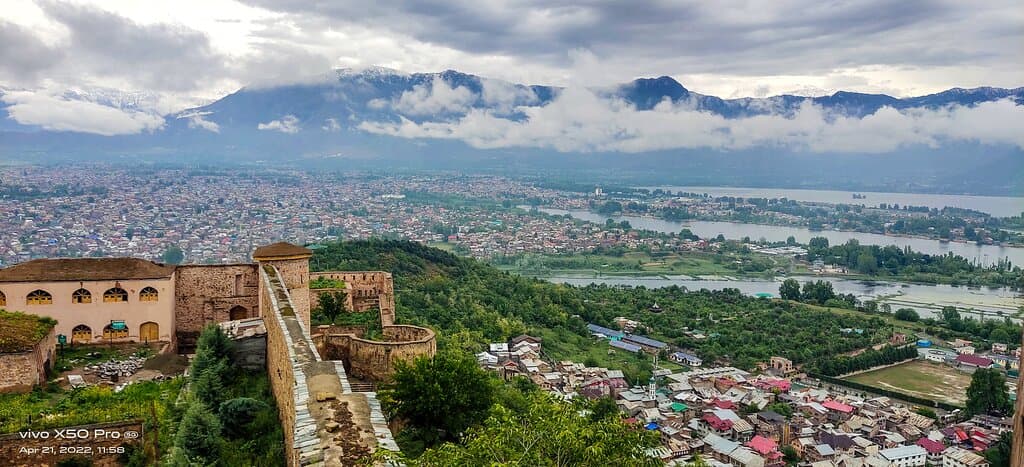
Hari Parbat Fort Srinagar
Historic fort offering stunning panoramic views of Srinagar, Dal Lake, and surrounding mountains, with sites of religious harmony.
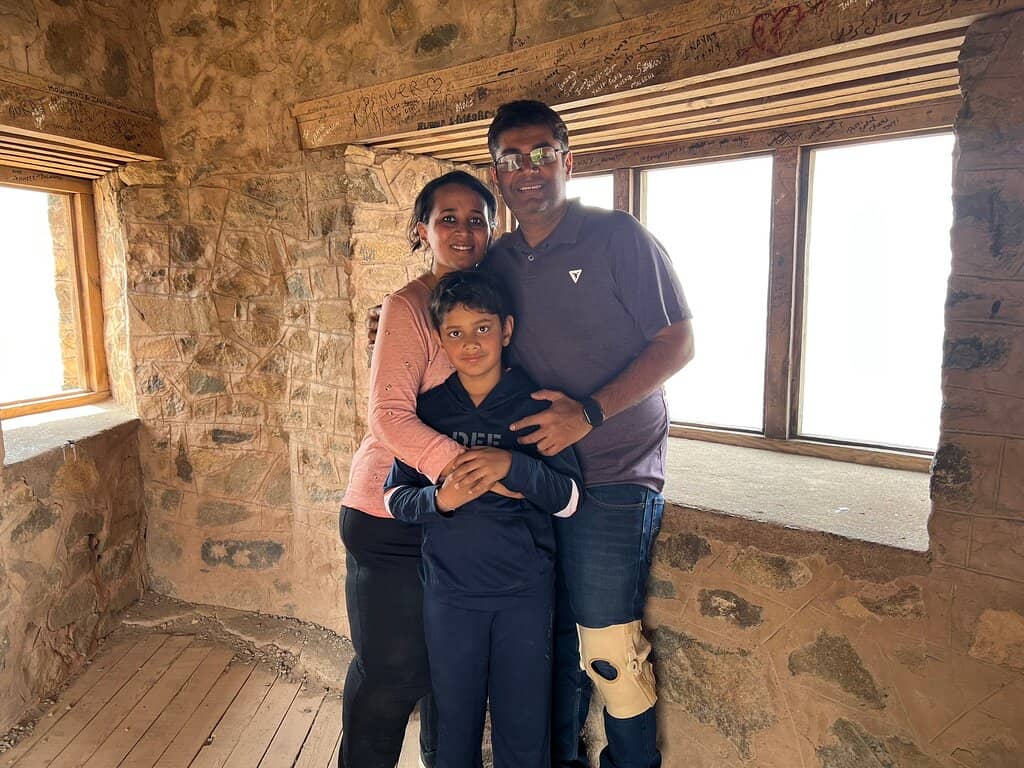
Highlights
Must-see attractions
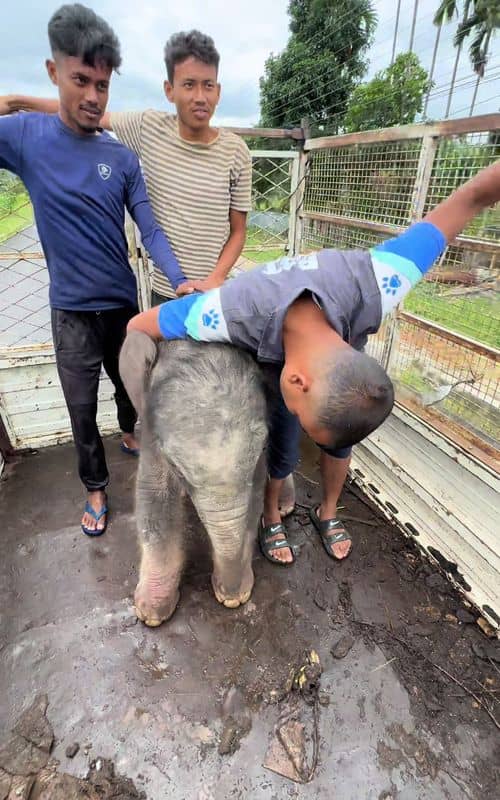
Social
From TikTok & Reddit
Best Time
Best light for photos & cooler temps

Hari Parbat Fort Srinagar
Best Time
Best light for photos & cooler temps

Highlights
Must-see attractions
Historic fort offering stunning panoramic views of Srinagar, Dal Lake, and surrounding mountains, with sites of religious harmony.
"Breathtaking views and historical significance make Hari Parbat a must-visit, despite maintenance issues."

Bring Your Government ID
:id: Essential for entry! Your ID will be held at the gate and returned upon exit.
Wear Comfortable Shoes
:athletic_shoe: You'll be doing some walking and potentially a short trek uphill.
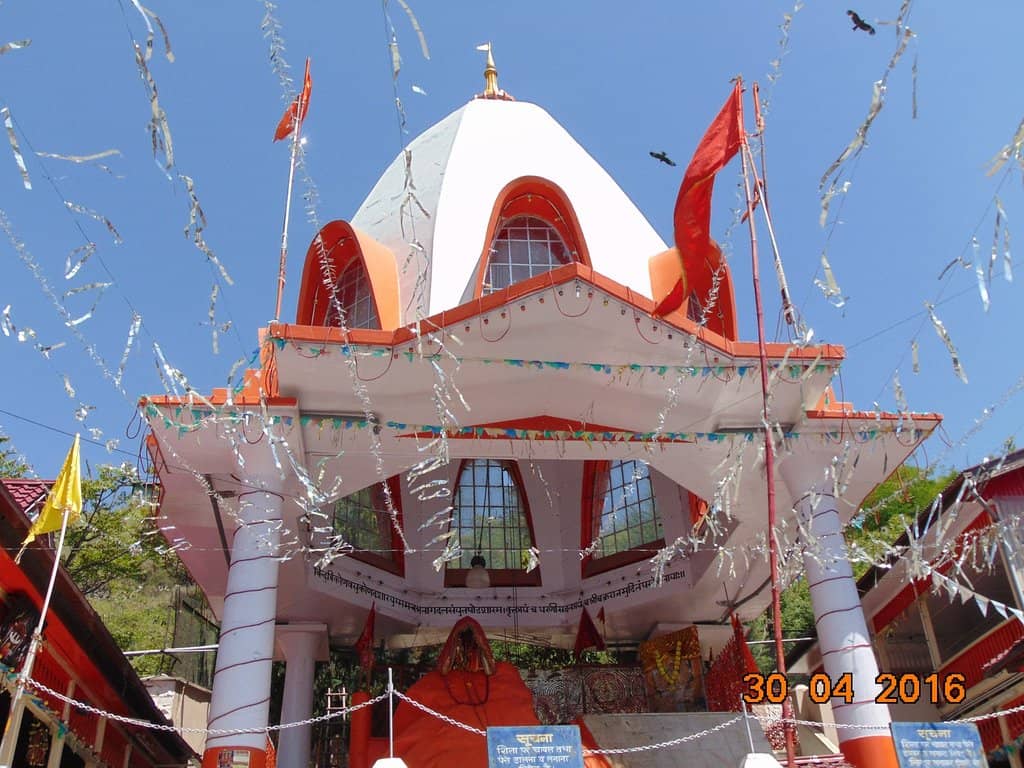
Highlights
Discover the most iconic attractions and experiences
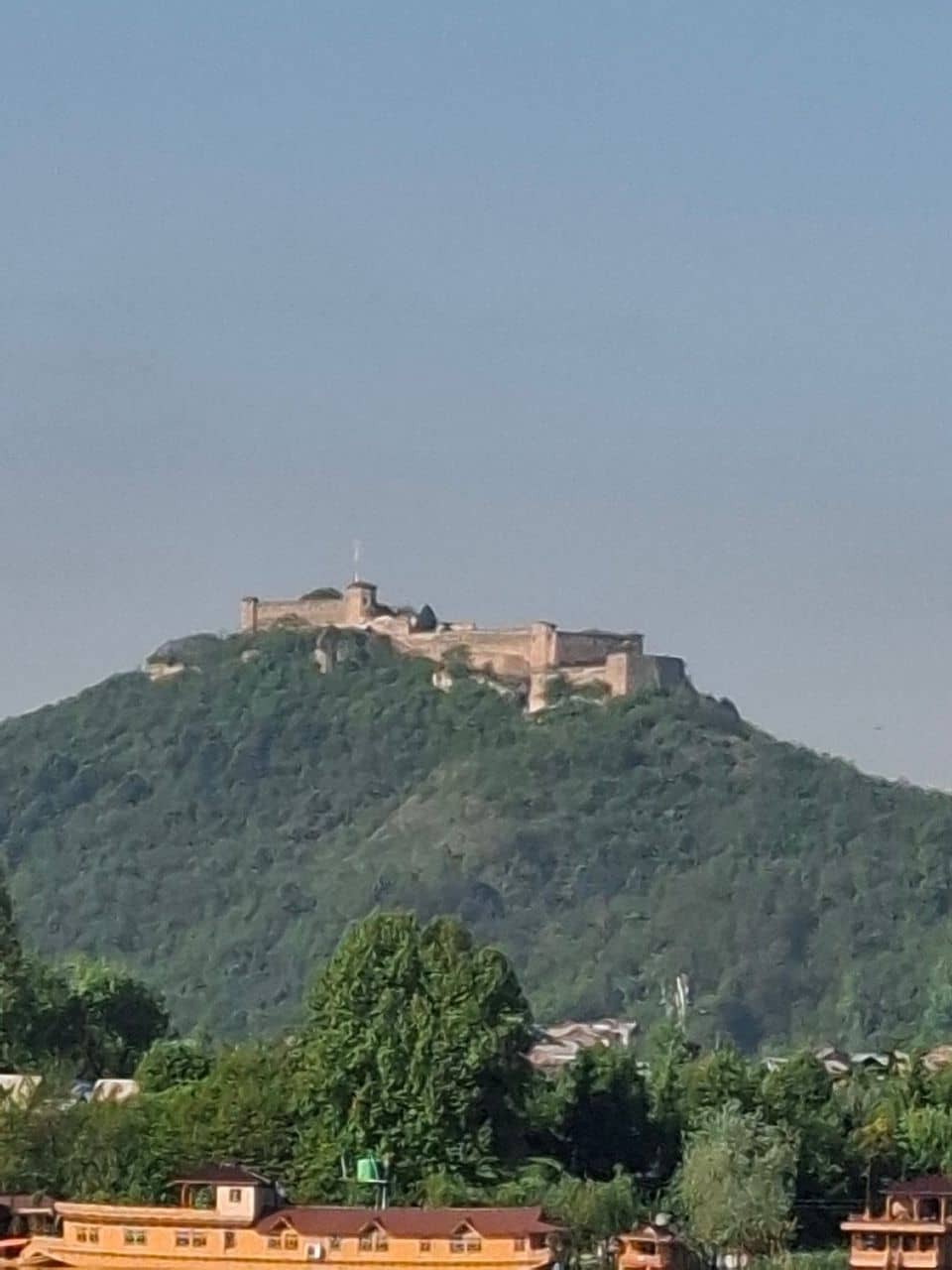
Panoramic City Views
Top of Hari Parbat Fort
Breathtaking 360-degree views of Srinagar, Dal Lake, and surrounding mountains. Perfect for photos!
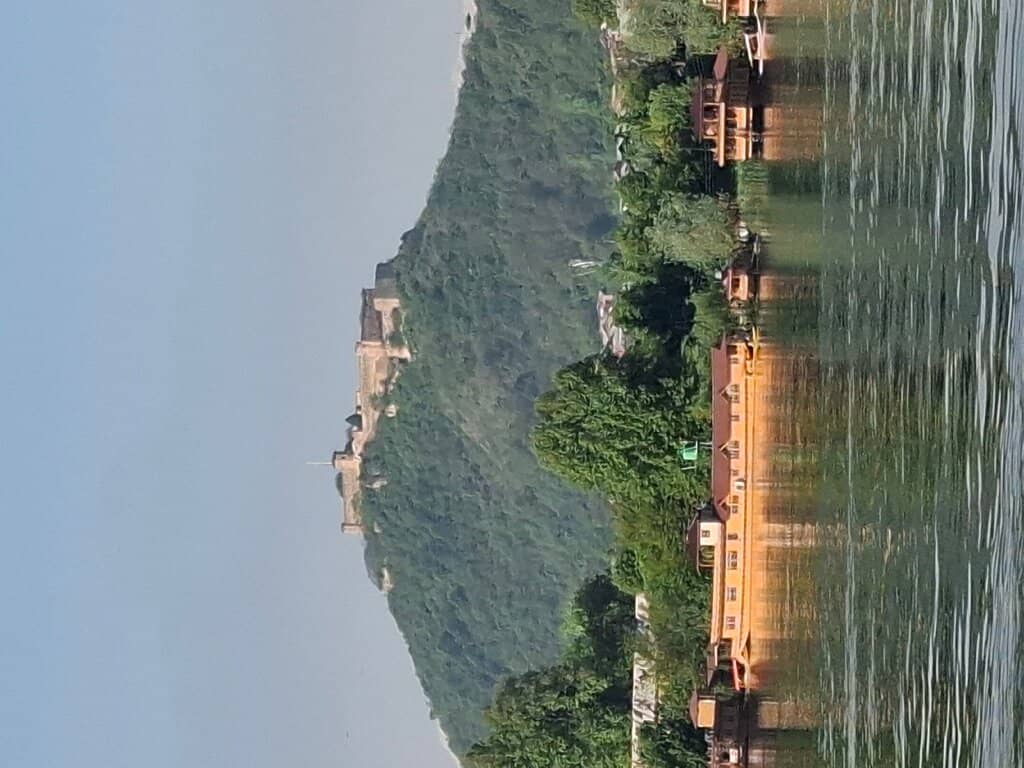
Historic Fort Architecture
Hari Parbat Fort
Explore the 18th-century fort built by Atta Mohammed Khan, a testament to Mughal and Durrani architectural styles.
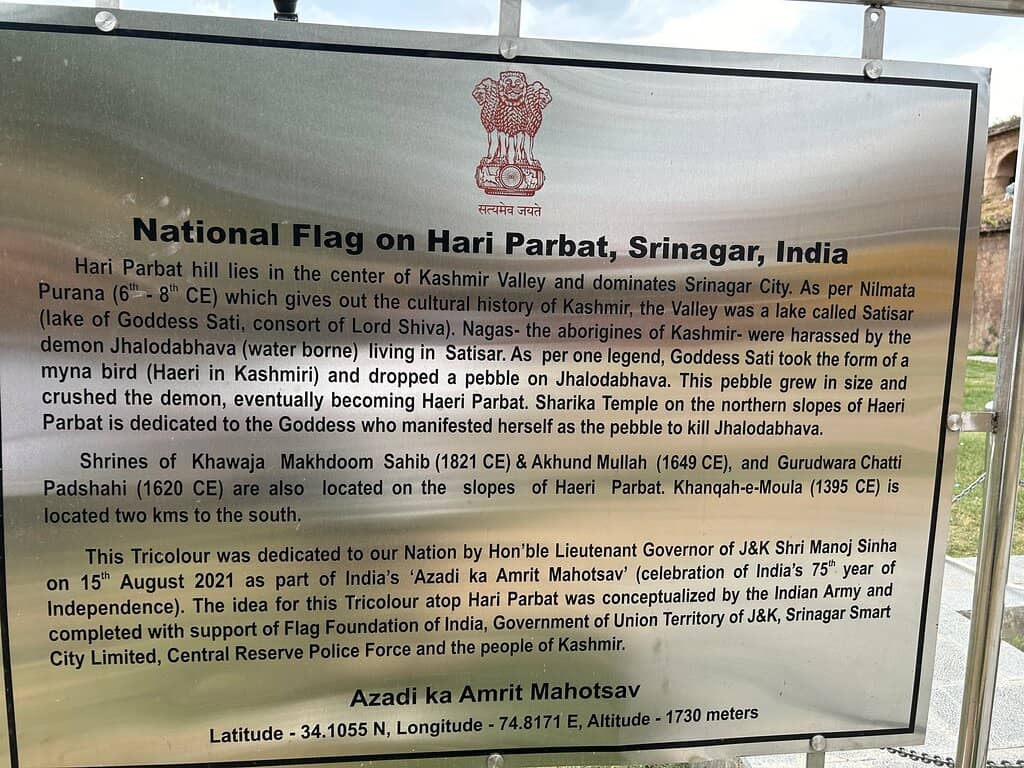
Spiritual Harmony Sites
Base and within Hari Parbat hill
Discover the coexistence of faiths with a Hindu temple, mosques, and a Sikh gurdwara.
Plans like a pro.
Thinks like you
Planning Your Visit
Fort Access & ID Requirements
Best Time for Views & Comfort
Best Times
Insider Tips
from TikTok, Instagram & Reddit
Bring Your Government ID
:id: Essential for entry! Your ID will be held at the gate and returned upon exit.
Wear Comfortable Shoes
:athletic_shoe: You'll be doing some walking and potentially a short trek uphill.
Capture the Views
:camerawithflash: The panoramic vistas are incredible for photography.
Respect Religious Sites
:pray: Be mindful and respectful when visiting the temple, mosques, and gurdwara.
Tips
from all over the internet
Bring Your Government ID
:id: Essential for entry! Your ID will be held at the gate and returned upon exit.
Wear Comfortable Shoes
:athletic_shoe: You'll be doing some walking and potentially a short trek uphill.
Capture the Views
:camerawithflash: The panoramic vistas are incredible for photography.
Respect Religious Sites
:pray: Be mindful and respectful when visiting the temple, mosques, and gurdwara.
Check Weather Forecast
:cloud: Srinagar weather can change; pack accordingly for sun or potential rain.
What Travellers Say
Reviews Summary
Visitors praise Hari Parbat Fort for its breathtaking panoramic views of Srinagar and Dal Lake, and its significant historical and spiritual importance, showcasing religious harmony. However, many note that the fort's maintenance is lacking, with issues like unclean restrooms and general upkeep concerns detracting from the experience.
"The place is historic and views from the fort are great. Entire Srinagar is visible from the fort along with Dal Lake.
Unfortunately it is not being maintained properly. Wild grass, unclean toilets, garbage and broken parts of the fort. The water is also dirty in the pools.
Hope the authorities pay heed to this."
Piyush Patil
"The fort atop the hill was initially fortified by the Mughal emperor Akbar in 1590, though the current structure was completed in 1808 by Atta Mohammed Khan, a governor under the Durrani Empire.
According to Hindu mythology, the hill was formed when Goddess Parvati, in the form of a bird, dropped a pebble on the demon Jaledbhava, which grew into the hill we see today. The site is sacred to Hindus, Muslims, and Sikhs, featuring a temple, mosques, and a gurdwara.
Entry to Hari Parbat is quite affordable, with a nominal fee of 725 for Indian citizens and 750 for foreigners. However, due to its strategic importance, the site is under the protection of the Indian Army. Visitors need to obtain special permission from them near the gate to enter the place.
One of the highlights of visiting Hari Parbat is the panoramic view of Srinagar it offers. From the top, you can see the sprawling city, the serene Dal Lake, and the surrounding mountains. It's a perfect spot for photography enthusiasts and nature lovers alike.
Hari Parbat is home to several significant religious sites. The Sharika Devi Temple, dedicated to Goddess Jagadamba, is a revered spot for Kashmiri Pandits. Additionally, there's a gurdwara, Gurdwara Chatti Patshahi, which marks the place where Guru Har Gobind, the sixth Sikh Guru, stayed during his travels. The presence of these diverse religious sites makes Hari Parbat a symbol of communal harmony."
Milind Shah
"Hari Parbat, also known as Hari Parvat Fort or Hari Parbat Palace, is a historic fort and palace located in Srinagar, Jammu and Kashmir, India. The fort was built in the 18th century by Atta Mohammad Khan, a governor of Kashmir during the Afghan rule. Later, it was renovated and expanded by the Dogra rulers. The palace offers stunning views of the surrounding landscape and houses a Gurudwara, a temple, and a masjid, showcasing the region's cultural diversity.
I visited Hari Parbat Palace in peak summer, when the temperature soared to 35°C. Walking up the 150 steps was challenging, but the scenic views from the palace made it worthwhile. The viewpoints offered stunning vistas of Eid Gah, Tulip Garden, and other notable spots. Security was tight, but it was understandable given the need to ensure everyone's safety. The locals were allowed easily inside. They also confiscate the Government ID at the entrance and return it upin exit to keep a record of people returning and not camping there. While the palace's historical significance and architectural beauty are notable, the restrooms were disappointingly unclean. I would not recommend visiting the areas nearby the restrooms. Despite this, the palace's views and historical importance make it a worthwhile visit."
Sia
What People Like
What People Dislike
Frequently Asked Questions
🚇 🗺️ Getting There
Hari Parbat Fort is located on a hill overlooking Srinagar, about 5 km from Dal Lake. You can hire a taxi or auto-rickshaw from anywhere in the city. The ascent to the fort involves a short trek, which is pleasant and surrounded by greenery.
While direct public buses to the fort are uncommon, you can take a local bus towards the general area and then hire a shorter ride or walk the remaining distance. Taxis and auto-rickshaws are more convenient options.
The path to the top is a pleasant uphill trek, often described as a 10-minute walk. It's well-trodden and offers scenic views along the way.
While vehicles can go part of the way up the hill, the final approach to the fort itself is typically on foot. Be aware of road conditions, especially after rain.
The trek to the fort can be challenging due to the uphill path and steps. It may not be ideal for individuals with significant mobility issues.
🎫 🎫 Tickets & Entry
Entry to Hari Parbat Fort is quite affordable. Indian citizens pay a nominal fee of ₹25, and foreigners pay ₹50.
Yes, due to its strategic importance and army presence, you need to obtain special permission from the army near the gate. A government ID is mandatory for this process.
While specific official hours can vary, it's generally best to visit during daylight hours, typically from morning until late afternoon, to enjoy the views and explore safely.
There isn't a strict dress code, but it's advisable to dress modestly, especially given the presence of religious sites within the complex. Comfortable clothing suitable for walking is recommended.
Given the army presence and security, drone usage is likely restricted. It's best to check with the authorities on-site before attempting to fly a drone.
📸 📸 Photography & Views
The top of the fort offers the most spectacular panoramic views of Srinagar city and Dal Lake, making it ideal for photography. Look for vantage points along the fort walls.
Expect stunning 360-degree views encompassing the entire Srinagar city, the shimmering Dal Lake, and the majestic Pir Panjal and Zabarwan mountain ranges.
Yes, both sunrise and sunset offer beautiful lighting for photography. Sunrise views over the city and mountains are particularly praised.
Generally, photography is allowed, especially for the scenic views. However, be mindful of any specific signage or instructions from security personnel, particularly near sensitive areas.
Early morning or late afternoon provides the best light for photography, minimizing harsh shadows and offering a softer, more picturesque scene.
🎫 🕌 Religious & Cultural Significance
Hari Parbat is significant for its religious harmony, featuring the Sharika Devi Temple (Hindu), Gurdwara Chatti Patshahi (Sikh), and several mosques.
The fort was initially fortified by Emperor Akbar in 1590 and the current structure was completed in the 18th century by Atta Mohammed Khan. It's a symbol of Kashmir's rich heritage.
Yes, it holds religious importance for Hindus, Muslims, and Sikhs, with legends and historical connections to various religious figures and deities.
According to Hindu mythology, the hill was formed when Goddess Parvati dropped a pebble that grew into the hill, defeating a demon.
Absolutely. The presence of diverse religious sites and its historical role as a defensive structure showcase the region's multicultural past and present.
🎫 ⚠️ Maintenance & Facilities
While historically significant, some reviews mention that the fort is not being maintained properly, with issues like wild grass and garbage.
Unfortunately, several visitors have noted that the restrooms are not well-maintained and can be unclean.
There are no significant food stalls or restaurants within the fort complex itself. It's advisable to eat before or after your visit.
Basic amenities are limited. While there are viewpoints, the condition of facilities like restrooms has been a point of concern for visitors.
While you can report issues to the authorities, it's best to be prepared for less-than-ideal conditions in some areas and focus on the historical and scenic aspects.
For Different Travelers
Tailored advice for your travel style
👨👩👧 Families with Kids
🚶 Budget Travelers
📸 Photography Enthusiasts
Deep Dives
In-depth insights and expert knowledge
A Glimpse into History
The hill itself is steeped in local mythology, particularly within Hindu traditions. Legend has it that the hill was formed when Goddess Parvati, in the guise of a bird, dropped a pebble onto the demon Jaledbhava, causing it to grow into the formidable hill. This narrative adds a spiritual dimension to the historical site, making it a place of reverence for many.
Beyond its military and mythological significance, Hari Parbat is a powerful symbol of Kashmir's communal harmony. The complex is home to a Hindu temple (Sharika Devi Temple), mosques, and a Sikh gurdwara (Gurdwara Chatti Patshahi). This coexistence of diverse religious sites within close proximity highlights the region's long tradition of interfaith tolerance and cultural exchange.
Capturing the Essence: Photography at Hari Parbat
When exploring the fort itself, focus on the architectural details of the historic structure. The sturdy walls, gateways, and remnants of its past grandeur offer excellent subjects for close-up shots. The contrast between the ancient stone and the vibrant natural landscape surrounding it creates visually striking compositions. Remember to also capture the spiritual sites within the complex, showcasing the unique blend of history and faith.
To make the most of your photography experience, consider visiting during the golden hours – early morning or late afternoon. This will provide the best lighting conditions, minimizing harsh shadows and enhancing the colors of the landscape. Ensure your camera or phone is fully charged, and bring extra storage, as you'll likely find yourself taking many photos.
Navigating the Fort: Access and Visitor Experience
The visitor experience at Hari Parbat is a mix of awe-inspiring views and some practical challenges. The panoramic vistas of Srinagar and Dal Lake are consistently praised and are the primary draw for most tourists. However, some reviews point out that the fort's maintenance could be improved, with mentions of overgrown grass and general upkeep issues in certain areas. Additionally, the condition of the restrooms has been noted as a drawback by several visitors, suggesting that visitors might want to use facilities elsewhere before or after their visit.
Despite these minor drawbacks, the historical significance, spiritual ambiance, and unparalleled views make Hari Parbat a worthwhile destination. It offers a unique perspective on Srinagar, blending history, culture, and natural beauty. Planning your visit during the cooler parts of the day will enhance your comfort and enjoyment of the spectacular scenery.
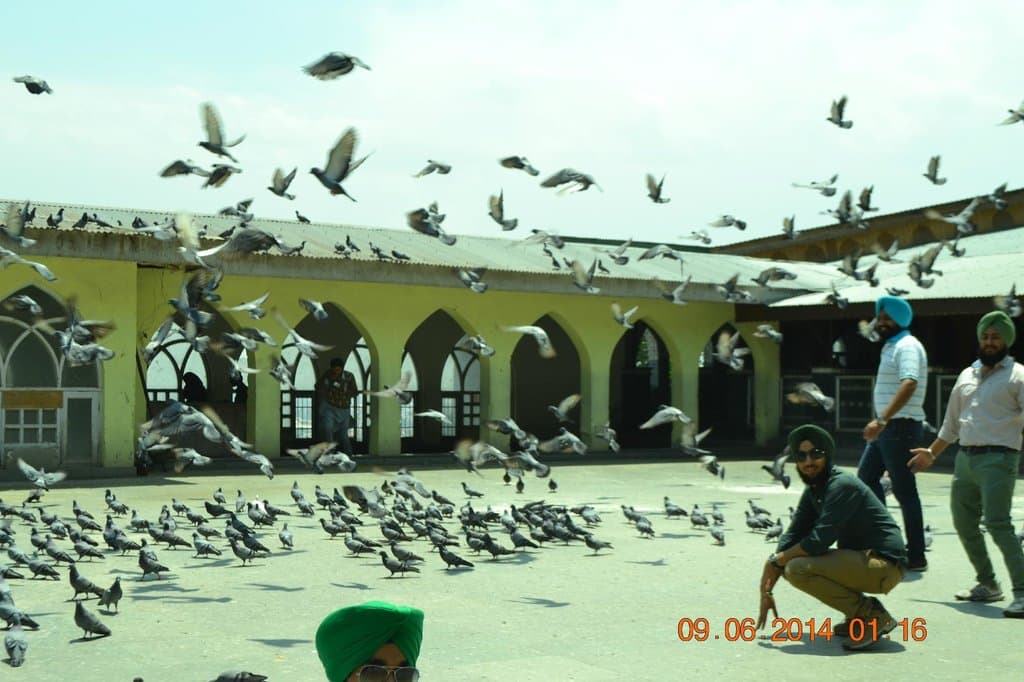

Social
from TikTok, Instagram & Reddit